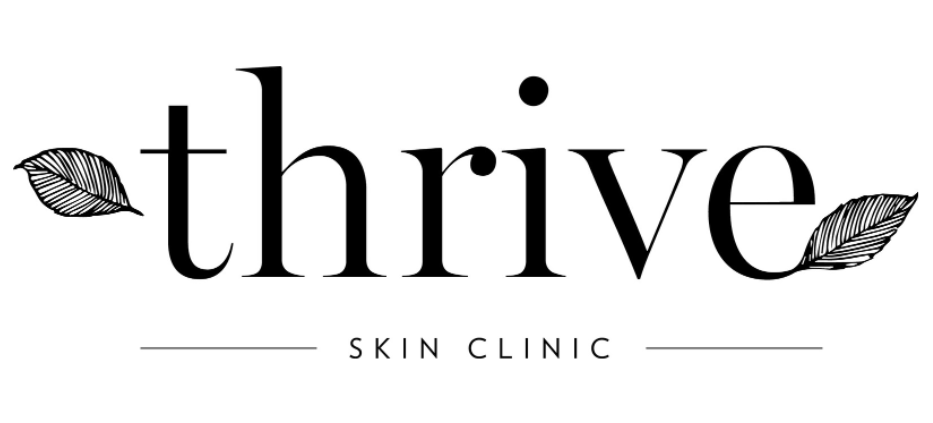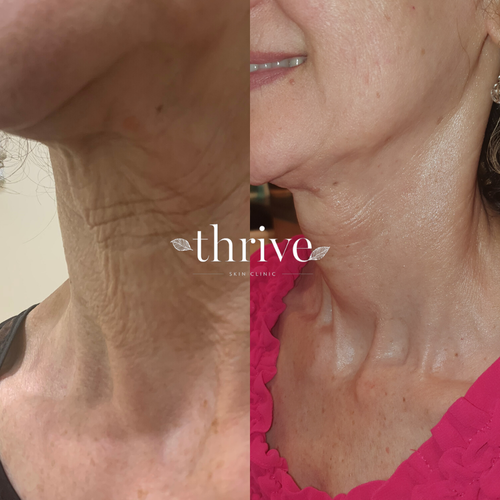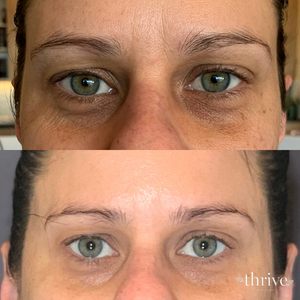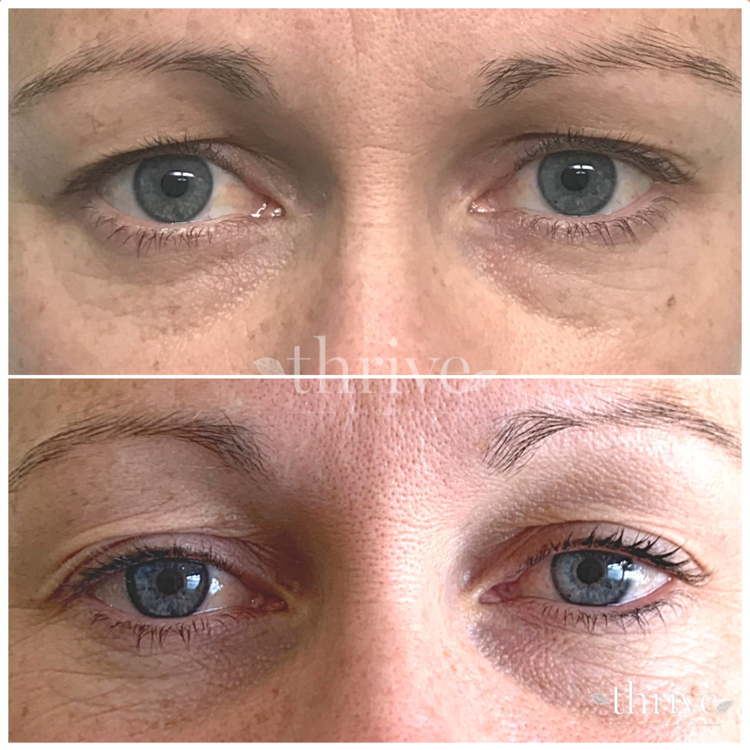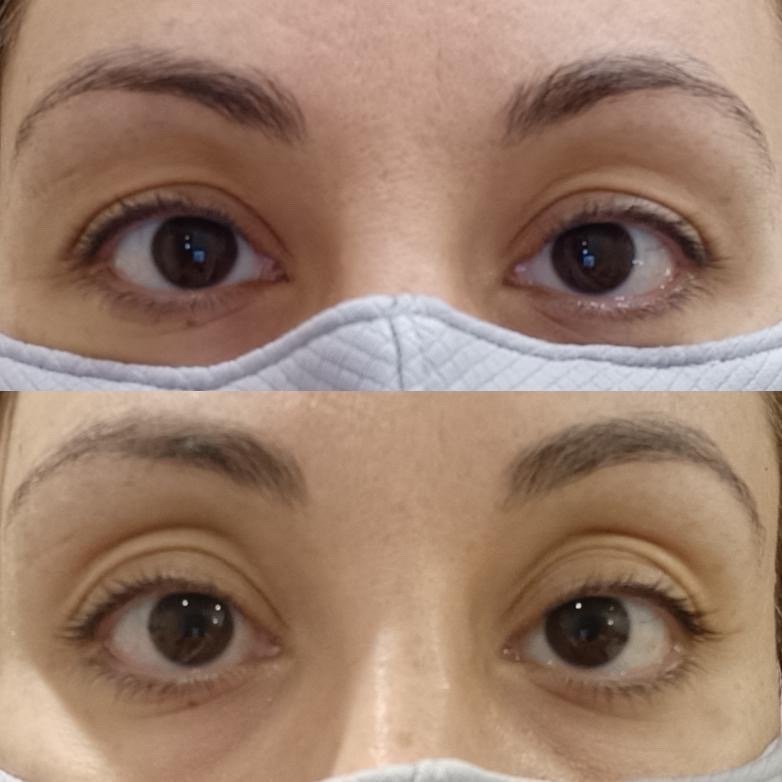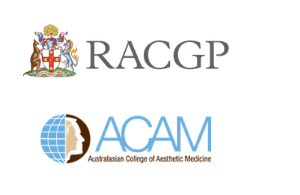🔥 Tixel® - the best low downtime skin rejuvenation device to get your skin glowing this winter
/All images © 2023 THRIVE SKIN CLINIC.
By Dr Jemima Grant
MBBS (Hons) BSc(Med) (Hons) BA FRACGP FACAM GP & Cosmetic Physician, Medical Director Thrive Skin Clinic
@jemimagrant
What is Tixel®
Tixel® is a skin rejuvenation system based on thermo-mechanical energy, meaning it uses heat and pressure energy to remodel skin. It’s not a laser, however it can bring about the same type of skin changes you see with a non ablative laser, with an increased safety profile and ability to treat the eye region - which is why I love it.
How does Tixel® work?
Tixel® uses a hot textured plate to heat the skin to about 400°C (YES, that is HOT!) - however, it touches the skin for only milliseconds at a time - so brief that this does not cause a significant wound, but inducing enough inflammation to remodel skin.
Think of the times where you may have touched a hot plate/grill or curling wand - although your fingers have touched something really hot, there is no significant burn because our spinal cord reflex moves our hands instinctively, reducing the thermal exposure.
Compared to lasers, there is much less energy produced from the treatment, which means the skin repairs much faster and the downtime is less- usually 1- 3 days of redness or mild swelling.
What areas and conditions can Tixel® treat?
While Tixel® is not the most powerful device on the market, it certainly has its place, especially for delicate skin around the eyes, on the neck and decolletage. The fact that it does not require light energy to work means that it safe for the eyes (i.e. will not cause blindness, like a laser). An added bonus is ease of use - it does not require messy gel or eye goggles.
How do I prepare my skin before Tixel®?
I now ask that all my patients use medical grade skin care prior to treatment as it improves recovery time and boosts results. I also ensure patients use a good SPF daily. I’m happy with Airyday and Uberzinc, and prefer the A Team Duo kit for medical grade skin preparation.
If patients don’t prepare their skin, I don’t treat them, or start with an open channel setting (low heat) - a bit like microneedling without needles. Tixel® is very versatile and this is another reason why I love it.
What to expect with a Tixel® treatment?
The procedure itself is quite straightforward and time efficient. After using it for a few years now, I have my own settings, combinations and protocols and I particularly like to utilise Tixel® in the eye area as much as possible to prevent and treat thin skin and laxity around the eyes or on the upper eyelids (this should be everyone, in my book!). I will often add it on to an IPL or laser treatment, because it’s so important to address the eyes BEFORE the issues become severe and surgical.
Tixel® can be used anywhere on the body and I also find it particularly effective for treating stretch marks and acne scarring as the results will be better. I treated my dog bite scar recently with my secret settings and have been amazed by the outcome of one session. My advice here is come in EARLY - as soon as the sutures are out.
Does Tixel® hurt?
We use a powerful compounded medical grade local anaesthetic which is applied 30 mins before your treatment. Most people find the treatment warm but tolerable. Distraction techniques like talking, tapping or vibration can help. I find most people enjoy a chat with the clinician during this type of treatment and the process passes quite quickly!
What is the downtime like after Tixel®?
Tixel® results in low levels thermal injury, which means the downtime is quick - usually 1- 3 days of redness and swelling, after which the skin remains dry for a few weeks, before it flakes off revealing fresh healthy new skin below. If patients have a lot of sun damage and superficial pigmentation, this may also lift off after the treatment, appearing as tiny little (temporary) brown spots on the skin. While I don’t recommend Tixel® as a treatment for pigmentation, many patients notice an improvement in their complexion and pigment after a series of treatments especially the background “yellowing” of the skin that comes with age. IPL can be done 2 weeks later to lift of remaining pigmentation.
What is the normal treatment course?
Tixel® is usually done as a series of 3- 6 sessions, 6 weeks apart depending on the clinical concerns and expectation of the patient. I advise a maintenance session every 6 months, however some of my patients use this as their “treatment of choice” and they come every 3 months. Interestingly I often find this is the case in those with darker skin types such as Asian and Indian skin. I have a hunch this is because these skin types have a much higher rate of collagen in the skin compared to lower Fitzpatrick types so they respond really well to the treatment. As an added bonus, unlike lasers, Tixel® causes a very low incidence of Post Inflammatory Pigmentation, so my patients with darker skin prefer this as a treatment option.
Who is the best candidate for a Tixel® treatment?
My clinic is in a beach side suburb and I predominantly see professional women who have spent a lot of time in the sun, and will continue to do so. My patients do not tolerate extensive downtime. This means that Tixel® has been very popular for our patient population, with many of my long term patients returning every 6 months for a maintenance treatment. Tixel has also been embraced by those with skin of colour - darker skin types love Tixel®! While I do adjust my settings for those with darker skin, I have never had a significant issue with post inflammatory pigmentation after Tixel® and many of these patients rave about the glow and results they get.
In terms of age groups, I had used Tixel® with great results in in teenagers with acne scarring (it’s particularly good treating post inflammatory acne with red scarring), and in women in their 70s with thin crepey skin. I don’t find Tixel® works as well in thicker skin - I increase settings in this group, or refer for CO2 ablative laser, depending on expectations and concerns.
For those over 50 (or post menopausal at any age, including those on hormone blockers), expect a reduced clinical response to any active treatment which is related to metabolic dysfunction. You may need more treatments.
What are the contraindications to Tixel®?
Initially, I was very conservative with Tixel®, however I have now treated thousands of patients including those with darker skin, complicated medical issues and on medications.
You should never have a Tixel® treatment if you have an active infection on your face (e.g, a cold sore, a bacterial infection like impetigo or open acne breakout). This is because the Tixel® treatment may spread to the entire face and cause a severe infection. If you develop frequent cold sores, I prescribe you an antiviral medication to start the day before treatment and continue on for 5 days. Please be honest about your medical issues as we can prevent bad complications.
That said, there are some people I chose not to do Tixel on, including those with severe kidney or liver issues, immune deficiency and on certain medications that suppress the immune system. This is because I don’t think the process of collagen induction works well in these people, and it is a waste of their time. For these people, I may consider a Bioremodelling agent, or an open channel setting which I use to infuse active serums.
What role does a nutrition plan have in the collagen response?
You can only make collagen if you have adequate levels of protein, Vitamin C and Zinc in your diet. I want all my patients having Tixel® to focus on good nutrition and health for the 6 weeks prior to treatment and during the treatment course. If you are quote thin and restrict your calories, I also find the responses are often suboptimal and you may need more sessions, or prefer to look at other options. You are what you eat!
What about Vegans & Vegetarians?
There are been a few published articles on dietary protein restriction and collagen induction (involving Ultherapy, a type of HIFU). This showed that vegans and vegetarians have reduced clinical outcomes compared to those who eat meat. This is why I ask all my vegan and vegetarian patients to use a Vegan Collagen supplement such as Vegan Collagen from Imbibe, or WelleCo Protein Powder (made from Pea Protein). Read my blog here on this topic.
If you haven’t guessed already, I’m a fan. It’s not for everyone and having the right expectations about the treatment, along with adequate skin preparation and commitment to a course is important.
Our Winter Tixel® Promotion has just launched.
If you are interested book a consultation and prepared to save up to 20% for selected treatments packages.
